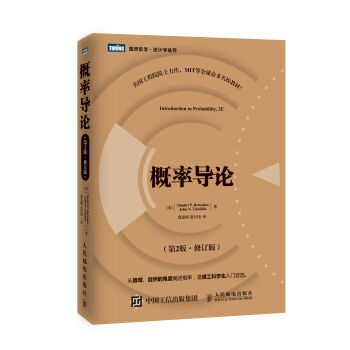![概率论教程:英文版(第3版) [A Course In Probability Theory]](https://pic.windowsfront.com/10060183/4b5ae0c7-d8a1-4c8f-a777-93a04a8aa2e7.jpg)

具体描述
内容简介
随机变量和分布函数,测度论,数学期望,方差,各种收敛性,大数律, 中心极限定理,特征函数,随机游动, 马氏性和鞅理论.本书内容丰富,逻辑紧密,叙述严谨,不仅可以扩展读者的视野,而且还将为其后续的学习和研究打下坚实基础。此外,本书的习题较多, 都经过细心的遴选, 从易到难, 便于读者巩固练习。本版补充了有关测度和积分方面的内容,并增加了一些习题。本书是一本享誉世界的经典概率论教材,令众多读者受益无穷,自出版以来,已被世界75%以上的大学的数万名学生使用。本书内容丰富,逻辑清晰,叙述严谨,不仅可以拓展读者的视野,而且还将为其后续的学习和研究打下坚实基础。此外,本书的习题较多, 都经过细心的遴选, 从易到难, 便于读者巩固练习。本版补充了有关测度和积分方面的内容,并增加了一些习题。
作者简介
Kai Lai Chung(钟开莱,1917-2009)华裔数学家、概率学家。浙江杭州人。1917年生于上海。1936年考入清华大学物理系。1940年毕业于西南联合大学数学系,之后任西南联合大学数学系助教。1944年考取第六届庚子赔款公费留美奖学金。1945年底赴美国留学。1947年获普林斯顿大学博士学位。20世纪50年代任教于美国纽约州Syracuse大学,60年代以后任斯坦福大学数学系教授、系主任、名誉教授。钟开莱著有十余部专著。为世界公认的20世纪后半叶“概率学界学术教父”。内页插图
目录
IndexPreface to the third editioniii
Preface to the second editionv
Preface to the first editionvii
1 Distribution function
1.1 Monotone functionsl
1.2 Distribution functions
1.3 Absolutely continuous and singular distributions
2 Measure theory
2.1 Classes of sets
2.2 Probability measures and their distribution functions
3 Random variable. Expectation. Independence
3.1 General definitions
3.2 Properties of mathematical expectation
3.3 Independence
4 Convergence concepts
4.1 Various modes of convergence
4.2 Almost sure convergence; Borel-Cantelli lemma
4.3 Vague convergence
4.4 Continuation
4.5 Uniform integrability; convergence of moments
5 Law of large numbers. Random series
5.1 Simple limit theorems
5.2 Weak law of large numbers
5.3 Convergence of series
5.4 Strong law of large numbers
5.5 Applications
Bibliographical Note
6 Characteristic function
6.1 General properties; convolutions
6.2 Uniqueness and inversion
6.3 Convergence theorems
6.4 Simple applications
6.5 Representation theorems
6.6 Multidimensional case; Laplace transforms
Bibliographical Note
7 Central limit theorem and its ramifications
7.1 Liapounovs theorem
7.2 Lindeberg-FeUer theorem
7.3 Ramifications of the central limit theorem
7.4 Error estimation
7.5 Law of the iterated logarithm
7.6 Infinite divisibility
Bibliographical Note
8 Random walk
8.1 Zero-or-one laws
8.2 Basic notions
8.3 Recurrence
8.4 Fine structure
8.5 Continuation
Bibliographical Note
9 Conditioning. Markov property. Martingale
9.1 Basic properties of conditional expectation3 l
9.2 Conditional independence; Markov property
9.3 Basic properties of smartingales
9.4 Inequalities and convergence
9.5 Applications
Bibliographical Note
Supplement: Measure and Integral
1 Construction of measure
2 Characterization of extensions
3 Measures in R
4 Integral
5 Applications
General Bibliography
前言/序言
In this new edition, I have added a Supplement on Measure and Integral. The subject matter is first treated in a general setting pertinent to an abstract measure space, and then specified in the classic Borel-Lebesgue case for the real line. The latter material, an essential part of real analysis, is presupposed in the original edition published in 1968 and revised in the second edition of 1974. When I taught the course under the title "Advanced Probability" at Stanford University beginning in 1962, students from the departments of statistics, operations research (formerly industrial engineering), electrical engi- neering, etc. often had to take a prerequisite course given by other instructors before they enlisted in my course. In later years I prepared a set of notes, lithographed and distributed in the class, to meet the need. This forms the basis of the present Supplement. It is hoped that the result may as well serve in an introductory mode, perhaps also independently for a short course in the stated topics.The presentation is largely self-contained with only a few particular refer- ences to the main text. For instance, after (the old) ~2.1 where the basic notions of set theory are explained, the reader can proceed to the first two sections of the Supplement for a full treatment of the construction and completion of a general measure; the next two sections contain a full treatment of the mathe- matical expectation as an integral, of which the properties are recapitulated in 3.2. In the final section, application of the new integral to the older Riemann integral in calculus is described and illustrated with some famous examples. Throughout the exposition, a few side remarks.
用户评价
这本书绝对是想要深入理解概率论的同学们的必读之作。它不像市面上很多教材那样,只关注于计算技巧,而是真正地在“教”概率论。书中的数学推导非常详尽,每一步都交代得清清楚楚,这对于我这种喜欢刨根问底的人来说简直是福音。我曾经花了大量时间去理解中心极限定理,但总觉得差那么一点火候,在这本书里,我终于找到了那种豁然开朗的感觉。作者对于统计推断部分的处理也十分到位,不仅仅是介绍了各种估计量和检验方法,更重要的是讲解了它们背后的原理和适用条件。我曾经因为混淆了一些统计概念而吃了亏,但在学习了这本书后,我发现自己能够更加自信地选择合适的统计工具来解决实际问题。而且,书中提供的练习题也很有深度,有些题目我反复推敲了好几次才得出答案,但每一次的思考过程都让我对知识点有了更深的掌握。这本书需要投入一定的时间和精力,但绝对物有所值,它会为你打下坚实的概率论基础。
评分这本书的质量绝对对得起它的价格,甚至可以说物超所值。印刷清晰,纸张质量也不错,翻阅起来很舒服。内容上,如前所述,它不是一本泛泛而谈的教材,而是真正地在“教授”概率论。作者在讲解过程中,非常注重培养读者的数学思维能力,引导读者去独立思考问题,而不是被动接受答案。这一点在我看来是非常宝贵的。我曾经尝试过阅读其他一些概率论的书籍,但很多都感觉像是“填鸭式”的教学,看完之后,虽然记住了一些公式,但对概率论的理解依然停留在表面。这本书则不同,它鼓励读者去探索,去发现,去建立自己的理解体系。我特别喜欢书中一些“思考题”,它们往往能够引导你去从不同的角度审视同一个问题,从而获得更深刻的认识。对于真正想要学好概率论的读者来说,这本书无疑是一个绝佳的选择。
评分我是一名研究员,在工作中经常会遇到需要处理大量不确定性数据的场景。之前我一直依赖一些现成的统计软件和库,但总感觉自己对背后的原理缺乏深入的理解,这导致在面对一些非标准的问题时,会显得束手无策。在朋友的推荐下,我开始阅读这本《概率论教程:英文版(第3版)》。这本书从最基础的公理化体系出发,系统地介绍了概率论的各个方面,并且深入探讨了许多高级主题,比如马尔可夫链、鞅论等。作者在讲解这些复杂概念时,并没有回避数学的严谨性,而是通过精妙的证明和深入的分析,将它们化繁为简。我尤其喜欢书中关于极限理论的阐述,它让我深刻理解了为什么我们在很多实际问题中可以使用近似方法。这本书对于我理解和发展新的统计模型非常有启发,让我能够更自信地解决工作中遇到的难题。
评分说实话,一开始我被这本书的名字吓到了,以为会非常枯燥晦涩。但事实证明,我的担忧完全是多余的。这本书的语言风格非常流畅,即使是对于一些抽象的数学概念,作者也能够用一种相对易懂的方式来呈现。我尤其赞赏作者在讲解一些不那么直观的概率分布时,会引入很多实际的例子,比如泊松分布在描述单位时间内事件发生次数时的应用,或者指数分布在描述设备寿命时的场景。这些例子让我能够立刻将书本上的理论与现实世界联系起来,大大增强了我的学习兴趣。而且,这本书在数学符号的使用上也非常规范,这对于培养良好的数学习惯非常有益。我之前看的一些资料,符号使用比较随意,导致我经常要回头去查证,浪费了不少时间。这本书在这方面做得非常好,让我能够更加专注于理解数学内容本身。对于初学者来说,这本书可能会有一些挑战,但如果能坚持下来,绝对会获得丰厚的回报。
评分这本书真的是太棒了,彻底改变了我对概率论的理解!我之前学过一些概率论的基础知识,但总感觉像是在云里雾里,概念模模糊糊,解题也总是依赖套公式,知其然不知其所以然。直到我翻开了这本《概率论教程:英文版(第3版)》,我才真正体会到概率论的魅力所在。作者的讲解循序渐进,逻辑严谨,从最基础的集合论概念,到概率空间,再到随机变量、期望、方差,每一个概念都解释得鞭辟入里,并且通过大量的例子和直观的图示,帮助我建立起清晰的数学模型。尤其让我印象深刻的是,书中对于条件概率和独立性这两个核心概念的阐述,不再是冷冰冰的定义,而是通过生动的故事和实际场景,让我深刻理解它们在现实世界中的应用。我特别喜欢作者在引入一些稍微复杂一些的定理时,会先给出一些直观的解释,然后再进行严谨的数学证明,这样就不会让人感到突兀,也更容易接受。读这本书的过程,与其说是学习,不如说是一场思维的盛宴,让我对事物的不确定性有了全新的认识。
评分用来学英语(?>ω<*?)
评分送货及时,品质优良,学习必备。
评分数学系学这个可能浅了点,不过物理、化学、生物这些专业学习概率论是很好的教材。
评分all is perfect and convenient.
评分好好好好好好
评分很好
评分钟开莱的概率论是这个方面的经典,书中用测度论的观点讲述了概率
评分很好,质量很棒,正品,京东买书很快很好,点赞?
评分薄薄一小本,难啃也要啃
相关图书
本站所有内容均为互联网搜索引擎提供的公开搜索信息,本站不存储任何数据与内容,任何内容与数据均与本站无关,如有需要请联系相关搜索引擎包括但不限于百度,google,bing,sogou 等
© 2025 book.coffeedeals.club All Rights Reserved. 静流书站 版权所有

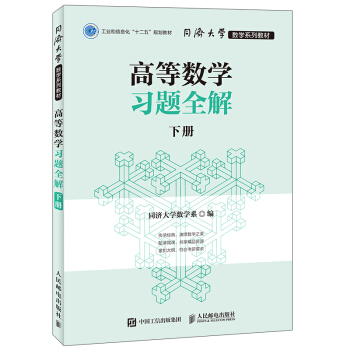
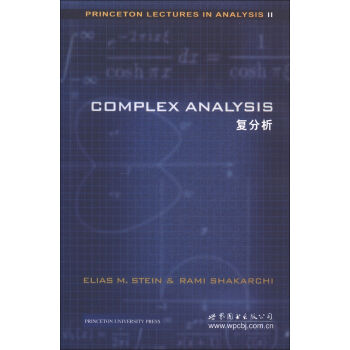
![技术分析新科学 [The New Science of Technical Analysis] pdf epub mobi 电子书 下载](https://pic.windowsfront.com/11507021/58070469N520a999d.jpg)


![傅里叶分析(英文版) [Fourier Analysis] pdf epub mobi 电子书 下载](https://pic.windowsfront.com/12038117/58b64435N573b64be.jpg)
![度量几何学教程(英文版) [A Course in Metric Geometry] pdf epub mobi 电子书 下载](https://pic.windowsfront.com/12118806/58be9238Nb3668bbc.jpg)
![计算流体动力学导论:有限体积法(第2版)(英文版) [An Introduction To Computational Fluid Dynamics:The Finite Volume Method Second Edition] pdf epub mobi 电子书 下载](https://pic.windowsfront.com/10104524/420254d9-bf17-4b57-b888-2c8bf507d081.jpg)

![单复变函数论(第三版 英文版) [Function Theory of One Complex Variable] pdf epub mobi 电子书 下载](https://pic.windowsfront.com/12118836/58b391f9Ncd7125d1.jpg)
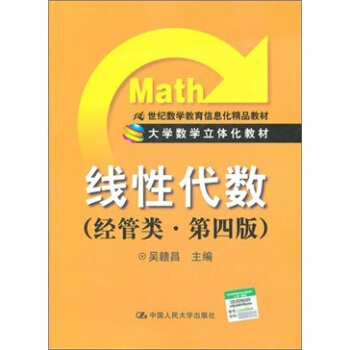
![微分几何中嘉当的活动标架法和外微分系统初步(英文版) [Cartan for Beginners:Differential Geometry Via Moving Frames and Exterior Differential Systems] pdf epub mobi 电子书 下载](https://pic.windowsfront.com/12118838/58b7eec3Na6355b93.jpg)
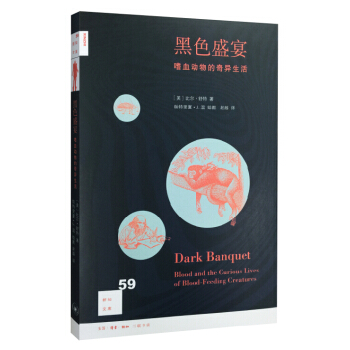
![偏微分方程(第二版)(英文版) [Partial Differential Equations(Second Edition)] pdf epub mobi 电子书 下载](https://pic.windowsfront.com/12118820/58b64434Nb10d4937.jpg)




![基因的分子生物学(第七版) [Molecular Biology of the Gene] pdf epub mobi 电子书 下载](https://pic.windowsfront.com/11672603/552b7771N0a9cf36d.jpg)
